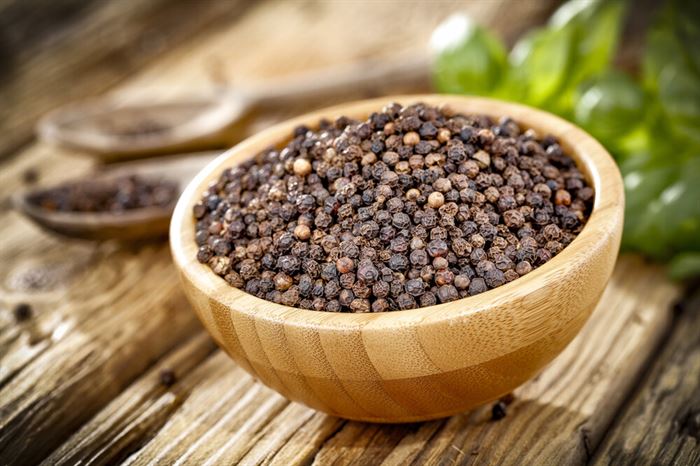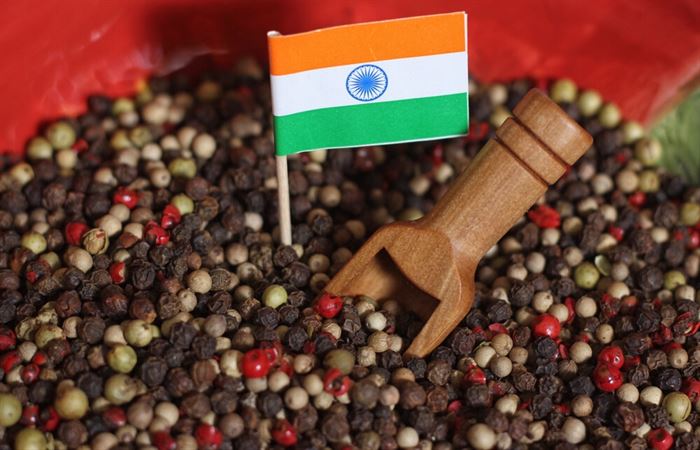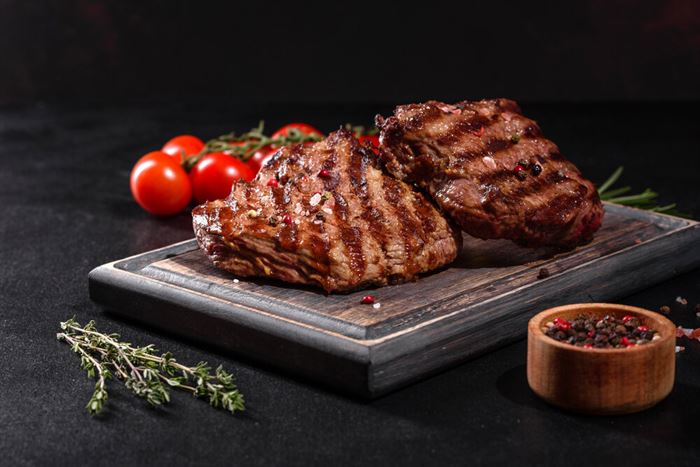Black pepper is often dubbed the ‘king of spices’, gracing tables and cuisines worldwide. Its pungent aroma and sharp taste make it a staple in both humble households and gourmet kitchens. But where does black pepper come from? While many have heard tales of its origin, a blend of myths and truths exists. This article seeks to sift fact from fiction, diving into the authentic journey of this beloved spice from its roots to our tables.

Contents
The Allure of Black Pepper: Why It’s Important
Black Pepper in Global Cuisine
Since ancient times, this fiery spice has graced dinner tables and tantalized palates across different continents. Known for its unmistakable aroma and versatile flavor profile, it has been a prized ingredient in a myriad of dishes – from the simplest of broths to the most intricate of delicacies. In many global cuisines, its inclusion signifies richness, transforming ordinary ingredients into gourmet experiences.
Its Significance in Trade and Ancient Valuation
But the allure of black pepper extends beyond the kitchen. Historically, it was not just a flavor enhancer but also a symbol of wealth and prosperity. Traded along the Silk Road and other significant trade routes, it became as valuable as gold to some ancient civilizations. Merchants and explorers undertook perilous journeys, navigating treacherous terrains, to acquire this ‘black gold’. The high regard for pepper led to its use not just as a culinary ingredient but also as a form of currency and a show of affluence. This reverence paints a vivid picture of the deep-rooted significance of this simple spice in shaping history and commerce.

Black Pepper Origin Stories: From Myth to Reality
Ancient Myths Surrounding Pepper’s Genesis
Long ago, tales of this fiery grain were whispered across continents. One legend suggests it grew in enchanted forests guarded by dragons, a belief possibly stemming from its fiery taste. Another speaks of it being a gift from deities, bestowed upon humanity as a bridge between the mundane and the divine.
Grounded in Geography: Pepper’s True Roots
Contrary to myths, the piper nigrum plant, from which the spice is derived, has humbler beginnings. Native to the Western Ghats of tropical India, these peppercorns were initially utilized for medicinal purposes before they spiced up our dishes. As time progressed, their culinary value became evident, and soon, they started their journey on trade routes, spreading to various parts of the world.

Cultural Narratives Shaping Spice Perceptions
The myths surrounding spices like pepper illustrate a larger phenomenon. Such narratives often emerge from a combination of awe, limited knowledge, and the human penchant for storytelling. Over time, these tales become intertwined with cultural identities, influencing how we perceive and appreciate the everyday ingredients in our kitchens.
Misconceptions About Black Pepper Production
Myths Surrounding the Growth of Pepper
A prevalent misconception is that black pepper plants require unique or mystical conditions to flourish. Some believe they’re cultivated in hidden valleys or need specific rituals to yield fruits, perhaps inspired by the spice’s rich history and tales of its origin.
The Genuine Journey: From Seed to Spice
In truth, the piper nigrum plant thrives in tropical regions, preferring well-drained soil and partial shade. Beginning as small white flowers, they mature into berry-like drupes. Once harvested, these berries are dried, turning into the familiar peppercorns we recognize.
A Spectrum of Peppercorns: More than Just Black
An interesting fact is that black, white, green, and red peppercorns are all derived from the same plant. The difference lies in their processing: black is sun-dried unripe berries, white is the inner seed of ripe berries, green are unripe berries preserved in brine, and red is the fully ripe, fresh berries.

Black Pepper Trade Routes and History
The allure of black pepper once guided merchants through treacherous terrains and across vast oceans. These ancient routes, known as the Spice Roads, were essential in connecting the East to the West. Along these pathways, black pepper was more than a spice; it was a precious commodity that built empires and forged alliances.
Wars and Wealth: Pepper’s Role in Trade Conflicts
So valued was this humble spice that it often became a focal point in global trade wars. Empires sought control over pepper-producing regions, realizing that dominance in the spice trade translated to power, wealth, and influence on the global stage.
From Tropical Vines to Global Tables
Originating in the verdant landscapes of India, black pepper embarked on a journey of thousands of miles. Through trade, exploration, and cultural exchange, it found its way to tables across Europe, Africa, and beyond, cementing its position as a truly global ingredient.

Modern Black Pepper Production and Trade
Leading Producers in Today’s Pepper Market
Today, while its roots trace back to India, black pepper’s production has expanded globally. Nations like Vietnam, Brazil, and Indonesia have emerged as significant players, contributing vast quantities to the international market, thanks to optimal growing conditions and agricultural innovations.
From Farms to Shelves: The Distribution Chain
The journey of black pepper today is a testament to globalization. Once harvested, these peppercorns undergo processing, packaging, and quality checks. They then traverse sophisticated supply chains, from local distributors to international shipping hubs, finally gracing the aisles of grocery stores worldwide, ready for the discerning consumer.

In Conclusion, The Timeless Journey of Black Pepper
Black pepper is a simple yet powerful spice that has woven a tapestry of tales, trade, and tastes across millennia. From myths of its origin to its undeniable impact on global commerce and cuisine, it continues to spice up our dishes and lives. As we sprinkle those tiny granules onto our meals, we partake in a culinary tradition as ancient as civilization, celebrating a rich and flavorful history.


